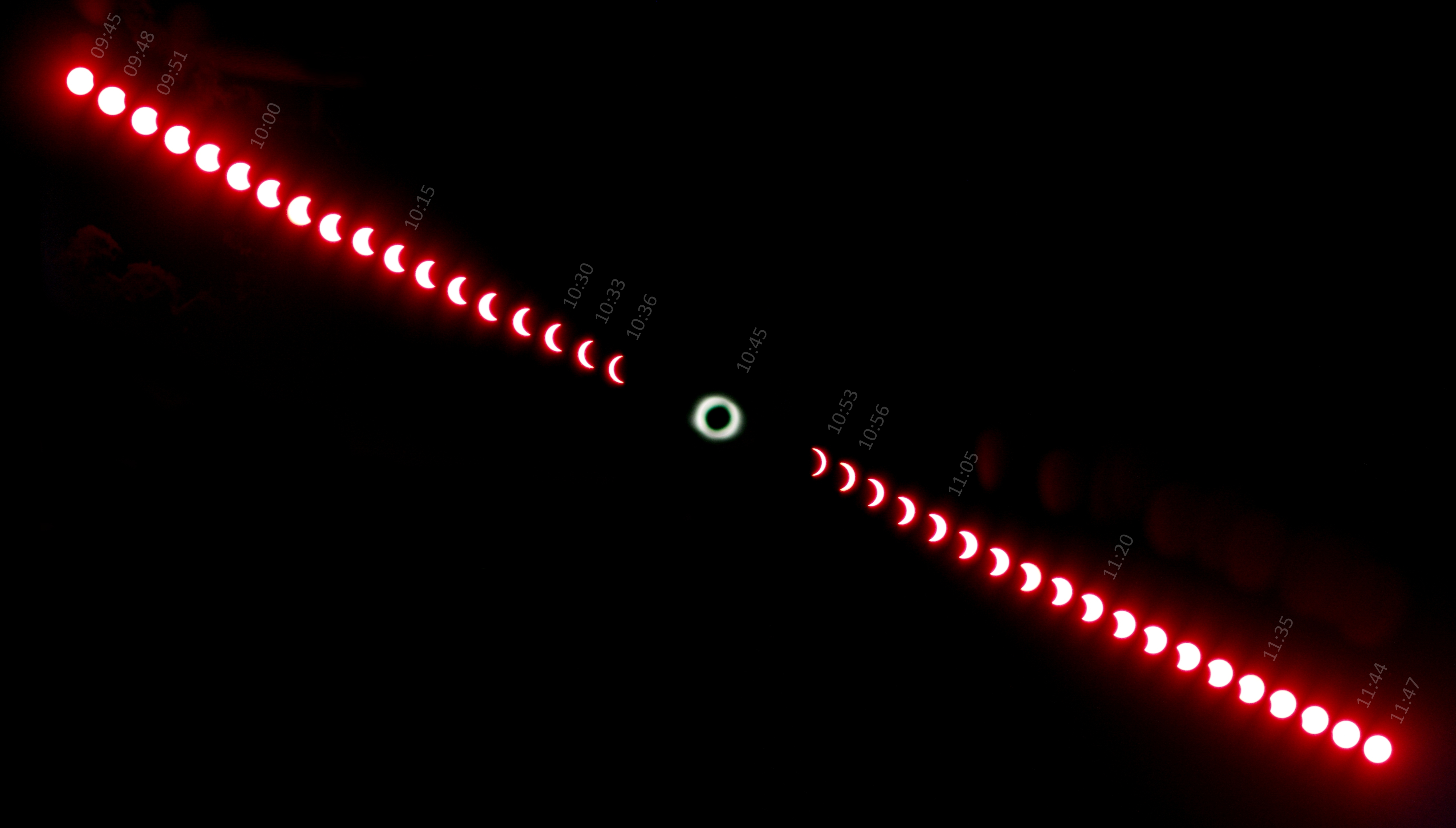Imagine how frightened prehistoric people
must have been when they saw a black disk covering up the sun. This darkening
of the sun In the middle of the day is called eclipse. The moon can go dark in
a similar way at night.
An eclipse is an astronomical
event that occurs when an astronomical object is temporarily obscured,
either by passing into the shadow of another body or by having another body
pass between it and the viewer
The term eclipse is most often used
to describe either a solar eclipse, when the Moon's shadow crosses the
Earth's surface, or a lunar eclipse, when the Moon moves into the Earth's
shadow. However, it can also refer to such events beyond the Earth-Moon system:
for example, a planet moving into the shadow cast by one of its moons, a moon
passing into the shadow cast by its host planet, or a moon passing into the
shadow of another moon. A binary star system can also produce eclipses if the
plane of the orbit of its constituent stars intersects the observer's position.
An eclipse cycle takes place when a series of eclipses
are separated by a certain interval of time. This happens when the orbital
motions of the bodies form repeating harmonic patterns. A particular instance
is the saros, which results in a repetition of a solar
or lunar eclipse every 6,585.3 days, or a little over 18 years (because
this is not a whole number of days, successive eclipses will be visible from
different parts of the world)
In fact, there are two kinds of
eclipse: the eclipse of the sun and the eclipse of the moon.
Solar eclipse
The progression of a solar
eclipse on August 1, 2008, viewed from Novosibirsk, Russia. The time between shots is
three minutes.
As observed from the Earth, a solar
eclipse occurs when the Moon passes in front of the Sun. The type of solar
eclipse event depends on the distance of the Moon from the Earth during the
event. A total solar eclipse occurs when the Earth intersects the umbra portion
of the Moon's shadow. When the umbra does not reach the surface of the Earth,
the Sun is only partially occulted, resulting in an annular eclipse. Partial
solar eclipses occur when the viewer is inside the penumbra.[10]The eclipse magnitude is the fraction of the Sun's diameter that is covered by the Moon. For a total eclipse, this value is always greater than or equal to one. In both annular and total eclipses, the eclipse magnitude is the ratio of the angular sizes of the Moon to the Sun.[11]
Geometry of a total solar eclipse (not to scale)
When observed at points in space other than from the Earth's surface, the
Sun can be eclipsed by bodies other than the Moon. Two examples are when the
crew of Apollo
12 observed the Earth to eclipse the Sun
in 1969 and when the Cassini probe
observed Saturn to eclipse the Sun in 2006.
Lunar eclipse
Main article: Lunar
eclipse
The progression of a lunar
eclipse. Totality is shown with the last two images to lower right. These
required a longer exposure time to make the details visible.
Lunar eclipses occur when the Moon passes through the Earth's shadow. Since
this occurs only when the Moon is on the far side of the Earth from the Sun,
lunar eclipses only occur when there is a full moon.
Unlike a solar eclipse, an eclipse of the Moon can be observed from nearly an
entire hemisphere. For this reason it is much more common to observe a lunar
eclipse from a given location. A lunar eclipse also lasts longer, taking
several hours to complete, with totality itself usually averaging anywhere from
about 30 minutes to over an hour.[12]There are three types of lunar eclipses: penumbral, when the Moon crosses only the Earth's penumbra; partial, when the Moon crosses partially into the Earth's umbra; and total, when the Moon crosses entirely into the Earth's umbra. Total lunar eclipses pass through all three phases. Even during a total lunar eclipse, however, the Moon is not completely dark. Sunlight refracted through the Earth's atmosphere enters the umbra and provides a faint illumination. Much as in a sunset, the atmosphere tends to more strongly scatter light with shorter wavelengths, so the illumination of the Moon by refracted light has a red hue,[13] thus the phrase 'Blood Moon' is often found in descriptions of such lunar events as far back as eclipses are recorded
Sumber : wikipedia.com






 6:02 PM
6:02 PM
 Sulaiman Agan
Sulaiman Agan




 Posted in:
Posted in: 

1 comments:
o
Post a Comment